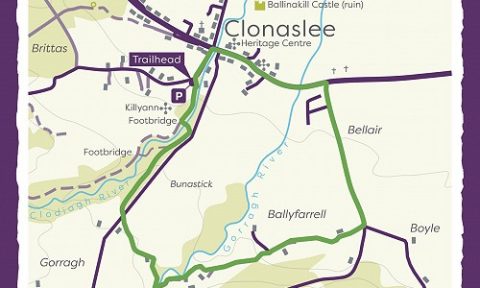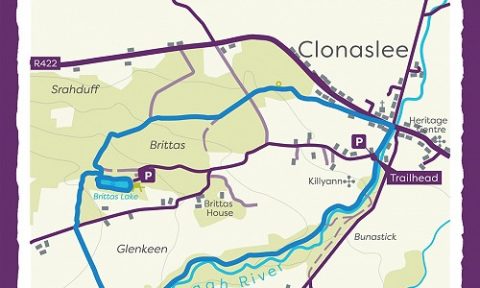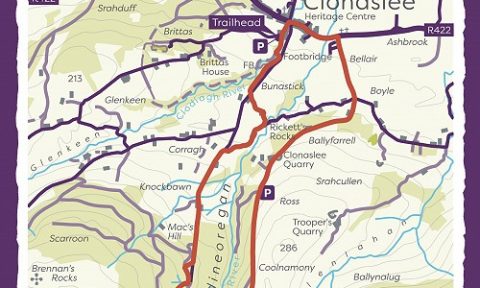Clonaslee Looped Walks
Clonaslee is a village in north County Laois, situated in the foothills of the Slieve Bloom Mountains on the R422 Mountmellick to Birr road. The name means “meadow of the way”, the way referred to was once a very important cross-country route across Laois leading onto Munster. It is an excellent hub for walking with access to the Slieve Bloom Way, Brittas Lake and also to a number of shorter looped walks.

Rickets Rock Loop

Brittas Lake Loop

Glendineoregan Loop
Directions to Trailhead
Brittas Forest Recreation Area, Clonaslee Garda Station, Main St, Brittas, Clonaslee, Co. Laois
From the bridge over the Clodiagh River in the village of Clonaslee (on the R422) follow the signpost for Glenkeen. The forest entrance is on your left after 200m.
Clonaslee is at the northern gateway to the Slieve Bloom Mountains. A picturesque village, founded in the 18th century, here lies the traditional seat of the O’Dunnes. Clonaslee lies on the famous Slí Dála or Munster Way.
Walking Calendar
The Slieve Bloom Walking Club organise walks every weekend of the year. All of these walks are led by an experienced and friendly walk leader who is very familiar with the mountains. These walks are post to the Walking calendar weekly.
A panel of guides are also available if you are are looking for a personal leader who can tailor-make a walk to suit your party or group.

